Recently, I said some not-nice things about the full-size Cadillacs of the ’70s, which I’ve never liked, and which I’ve previously likened to a fire sale on Cadillac prestige. After contemplating the gaudier end of the 1974 full-size lineup — the De Ville d’Elegance, Fleetwood Brougham d’Elegance, and Fleetwood Talisman — I don’t like them any better, but I think I have a better grasp on why ’70s buyers did, and why these cars became such monuments to gaudiness.

I’m not going to dwell on the usual complaints about ’70s Cadillacs: Yes, they were gigantic; yes, they were monstrously heavy; yes, their engines were pathetically underpowered and very thirsty; yes, they were clumsy in any kind of quick maneuvering. None of that was unique to Cadillac — nearly all big American cars of this period had similar faults, especially ones pitched as luxury cars.

Which speaks to the bigger problem: If you could get most of the size and nearly all of the substance elsewhere, potentially for less money, what was Cadillac’s unique selling proposition?

For a long time, that hadn’t been an issue. Through most of the ’50s and ’60s, demand for new Cadillacs had greatly outpaced supply, and the division’s biggest challenge was to keep the styling and engineering fresh without killing the golden goose. Until 1965, the division’s annual volume maxed out at about 150,000 cars a year, so there was room for Cadillac to offer quality materials and above-average production quality. However, by GM standards, that looked like leaving money on the table, so Cadillac expanded its production capacity and increased its sales volume, to 200,000 units by 1967, more than 250,000 by 1971, and more than 300,000 by 1973.

The sky looked like the limit, but there were downsides. Doubling sales volume didn’t double Cadillac’s budget, so corners had to be cut to keep costs down. Corporate management was also pushing harder and harder for greater standardization across divisions, and there were now federal safety and emissions regulations to manage.

Power and performance were at a low ebb industry-wide (not that they’d been a priority for Cadillac in some time anyway), and most of the gadgets and conveniences that had once set Cadillac apart were also available on cheaper cars.

So, what did Cadillac still have to offer? Other than the prestige of the Cadillac name — which still counted for a lot in Middle America back then — the main thing left to them was conspicuous opulence. Cadillac was now selling a lot more cars than ever before, often to people who’d never owned a new Cadillac before. The division couldn’t afford to give those customers the best, not at 300,000+ units a year, but they could dazzle them with glitz.

By 1974, this was no longer as easy as it sounds. Other domestic marques had been moving in a similar direction for years, so the Great Brougham Epoch had become an arms race of simulated woodgrain, padded vinyl, and increasingly rococo trim features, like the silver-and-gold wreath designs on each Cadillac control knob …

… or the disc of “distressed pecan” plastic wood that now blighted Cadillac steering wheel hubs, in addition to the existing and already aesthetically objectionable ring of embedded woodgrain.

As for upholstery, Cadillac had long offered some rather froufrou upholstery choices, like the Maharajah pattern cloth of the 1974 Sedan de Ville pictured earlier …

… but divisional product planners apparently fretted that those options lacked the extra tactile thrill of the decadent crushed velour available on the senior Fleetwood Brougham. So, for 1974, the De Ville also got a velour option, in a new vertically striped Mardi Gras pattern that reminds me of a hideous and uncomfortable corduroy sofa my family had when I was in middle school:

From March 1974, there was also the mercifully rare Metamora cloth option, which might have looked okay in a Chevrolet Vega, but seemed out of place in a Cadillac.

Naturally, you could also have padded vinyl tops in an assortment of colors (10 in 1974) and several styles. Vinyl roof coverings were still theoretically optional on the Calais and De Ville, but they were so common that I fear you’d have had to go down to the factory with a roll of $50 bills to get somebody to build you a car without one.

If that wasn’t quite enough, you could also order the new De Ville d’Elegance package, which combined the Mardi Gras velour upholstery …

… with matching seat-back pockets, dense deep-pile shag carpet, and carpeted floor mats …

… plus velour inserts on the door panels and rear quarter panels to match the seats:

It should be said that you could still order a fairly restrained, reasonably tasteful full-size Cadillac if you really wanted to. The 1974 hardtop Sedan de Ville pictured below is better-looking than the 1974 Coupe de Ville, the 5-mph bumpers are well-integrated, and the combination of Antigua Blue and white places no undue strain on either propriety or digestion.

I could do without the wire wheel covers, and the steering wheel is still hideous, but the Antique Dark Blue leather does not offend:

Here’s the problem, though: “Fairly restrained and reasonably tasteful” can also seem a lot like “bland,” and for the most part, Americans laying out between $9,000 and $12,000 (relative values of approximately $68,500 to $91,400 in 2025 dollars) for a new domestic luxury car in 1974 didn’t want bland — they wanted something that would really wow Aunt Peggy and Cousin Bosco, who never rode in a Cadillac before.

Judging by the sales figures, the De Ville did that well enough for most buyers, but for customers who wanted more and were prepared to pay for it, there was also the Fleetwood Sixty Special Brougham. This represented a fairly sizable jump in price over the De Ville (more than $1,400 extra by mid-1974), but it netted you about 4.5 inches of extra rear legroom and a step up in superficial lavishness.

For the ne plus ultra, you could order the Fleetwood Brougham with either the extra-cost Brougham d’Elegance package …

… or the now-infamous Fleetwood Talisman option:

Over the years, the Fleetwood Talisman has attained a notoriety that belies its very modest production numbers. The package was ordered on only 1,898 cars in 1974, a bit over 10 percent of Fleetwood Brougham production, followed by 1,238 in 1975 and 1,200 in 1976.

However, it’s hard to think of a more perfect summation of this particular mode of American extravagance. Insofar as the Great Brougham Epoch was an arms race, the Talisman was the Brougham equivalent of Tsar Bomba, the three-stage 1961 Soviet hydrogen bomb that remains the most powerful nuclear weapon ever detonated. Even if this sort of thing isn’t your bag (and it sure isn’t mine), you may recoil in shock or awe at the spectacle:


Like Tsar Bomba, the apocalyptic scale of Talisman Broughamery (Broughamness?) was the product of multiple stages. The first stage was the Medici crushed velour upholstery, which you could have on any 1974 Fleetwood model at no extra cost …

… and the simulated carved wood leaf trim on the dashboard, which I personally would have paid extra to omit:

The second stage was shag carpeting, matching carpeted floor mats, and velour door pad inserts, which you could also get in the somewhat cheaper ($750) Brougham d’Elegance package pictured above and below.


Ordering the Brougham d’Elegance option also gave you stand-up wreath-and-crest hood ornament, special wheel covers, and a specially trimmed padded roof with a rolled perimeter and “rich French seam” around the backlight.

The Brougham d’Elegance was already well into the megaton range of Broughamitude — it even impressed Elvis Presley, who bought this Cotillion White example bought for his psychic, Ms. Lou White, at a Brooklyn Cadillac dealer in the spring of 1974. Back then, the white-on-white exterior probably wouldn’t have drawn much comment, but the interior is deafening, with its deep-pile carpet and crushed velour trim in Dark Terra Cotta (orange).

(The folding rear footrests, incidentally, were standard equipment on the Fleetwood Brougham from 1966 to sometime during the 1977 model year.)

The significantly pricier ($1,711 to $1,800) Fleetwood Talisman package shared all of these features, but the third stage that really propelled it into the 50-MT Tsar Bomba class was its elaborate front and rear consoles, which were upholstered to match the extravagantly padded seats.

Cadillac had previously offered a console for De Ville and Eldorado models, but only in front and only with bucket seats, and it hadn’t been nearly as big or as lavishly upholstered.

At a glance, the ones in the Talisman might be mistaken for the fold-down center armrests Cadillac had offered for years, but they were much bigger, and they were fixed in place, transforming the gigantic Fleetwood Brougham into a strict four-passenger car.

Each console contained not one but two lockable compartments with their own interior lights.


Raising the lid of the front console’s top compartment revealed a lighted tray for a small notepad and pens, along with a plaque inscribed with the original purchaser’s name or initials.

The amber-colored Fleetwood Talisman pictured is missing its notepad, but the plaque reveals that it was originally built for singer/dancer/actor/comedian/Rat Pack member Sammy Davis Jr.:

Davis also had the car fitted with a special Louis Vuitton vinyl roof (which might not be the tackiest thing I’ve ever seen, but certainly comes close — the appeal of Vuitton has always eluded me):

No slight to Sammy (whose 1961 concert album At the Cocoanut Grove I was playing in the background as I wrote this post), but, much like the 1972 No. 1 single to which the plaque refers, this car is SO kitschy that it seems like a put-on. (Incidentally, Davis hated “The Candy Man,” calling the song “horrible … white bread, cute-ums,” but it made him a lot of money at the time.)

I imagine that Sammy saw this Talisman as a gas — something to show off to friends and the girls hanging around the club, to be parked or replaced when something more amusing came along. Looking at it now, I can only wonder how much trouble the sellers had getting the smell of stale tobacco smoke out of the plush velour upholstery. Like many Cadillac buyers in this period, Sammy was a smoker, and he was known to go through four packs a day.

You could argue that the Talisman wasn’t very practical (although I assume for many owners, having a place to stash their 8-track tapes and cigars was more useful than an uncomfortable middle seat), but that wasn’t really the point. Like the special color and trim editions and Designer Editions that began to appear on the Lincoln Continental Mark IV around this time, the consoles and well-padded seats were a conversation piece, a little added enticement for well-heeled buyers who wanted to feel like they had something extra-special — and perhaps to separate themselves from the many middle-class buyers who were putting themselves in hock to buy De Villes.

There’s no question that the D’Elegance and Talisman were over the top, even by the standards of a lineup that was increasingly defined by flourishes of sometimes execrable taste. However, that returns in a roundabout way to my original point: You could skip at least some of this gingerbread, but if you really didn’t want that kind of thing, there wasn’t much point in buying a Cadillac. There was no magic combination of options on the Cadillac order form in that era that would give you a car with Mercedes-Benz engineering, Jaguar road manners, or Rolls-Royce materials and craftsmanship, and if you just wanted the cushy American big car experience with a little less glitz, you could save yourself thousands of dollars by buying an Oldsmobile 98 Regency or even a Chevrolet Caprice Classic.

For better or worse, this kind of bling is what Cadillac was selling in the ’70s. If you found yourself in a Cadillac showroom with money in hand, asking them to hold the glitz was like going to a famous high-end seafood restaurant and ordering a hamburger — you could do that, I guess, but if you were going to such expense, you might as well have the specialty of the house.
Related Reading
Curbside Classic: 1974 Cadillac Sedan DeVille – The Last Of The Summer Citrus (by Joseph Dennis)
Too Big Even for America (Part 3): 1974 Cadillac Fleetwood Talisman (by Gerardo Solis)
Curbside Classic: 1975 Cadillac Fleetwood Brougham d’Elegance – Aged To Putrefaction (by Tatra87)
Curbside Classic: 1975 Cadillac Fleetwood Brougham – The Brougham’s Brougham (by Tom Klockau)
1963 Oldsmobile 98 Luxury Sedan – When Olds First Leapfrogged Buick On The Sloan Ladder (by Paul N)
1967 Cadillac Fleetwood Sixty Special And Brougham: Cadillac Builds The Ultimate Passenger’s Car (by me)




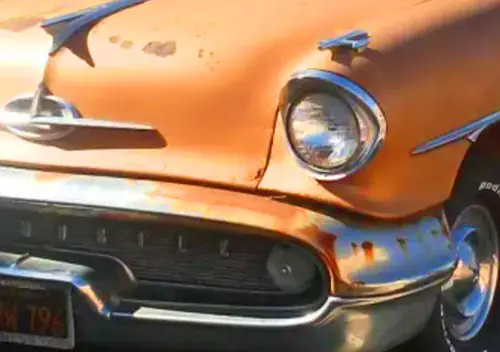
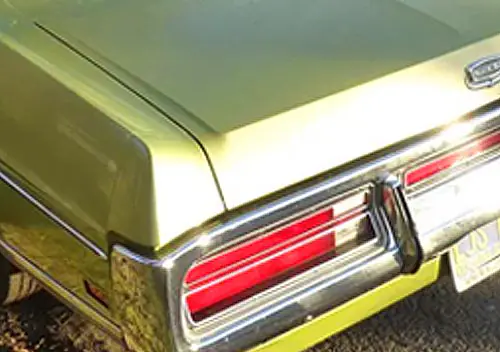
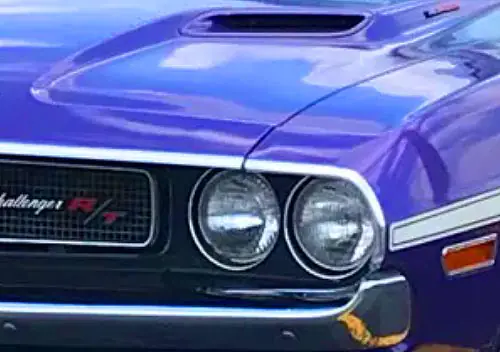


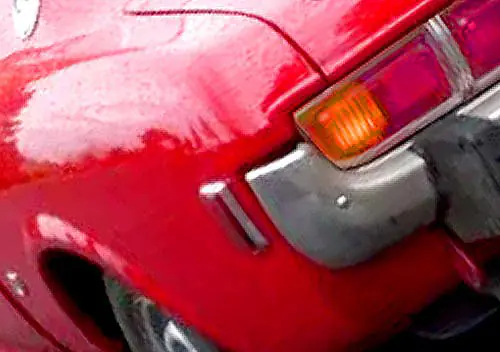

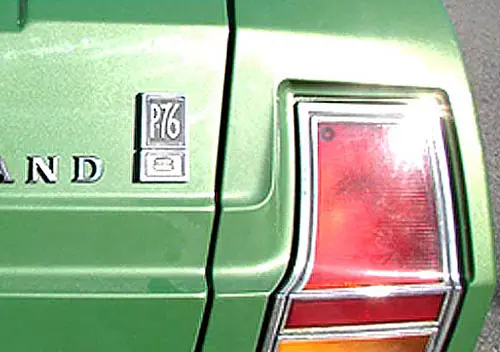
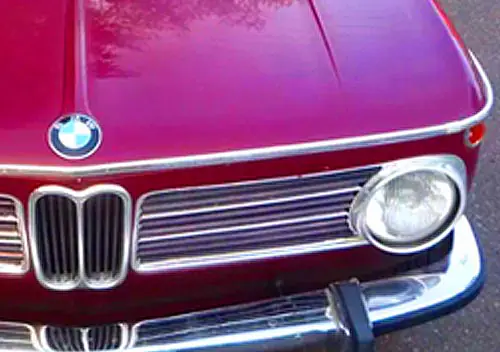

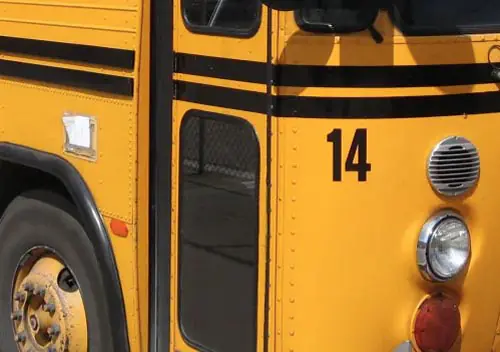
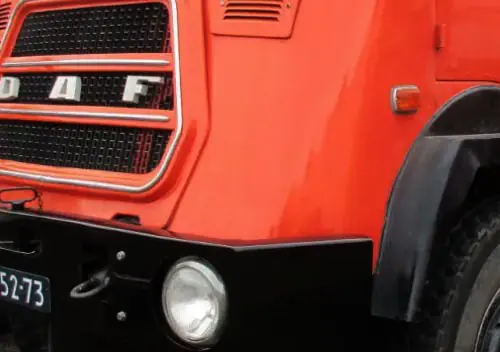
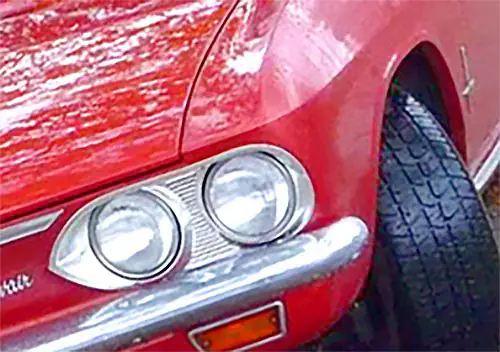
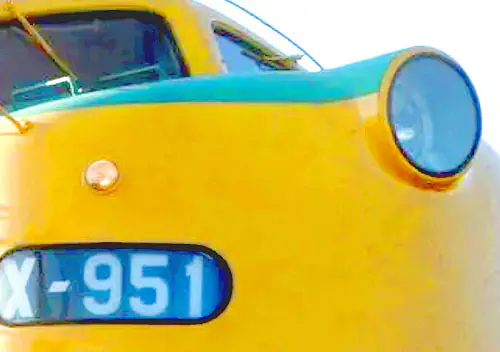
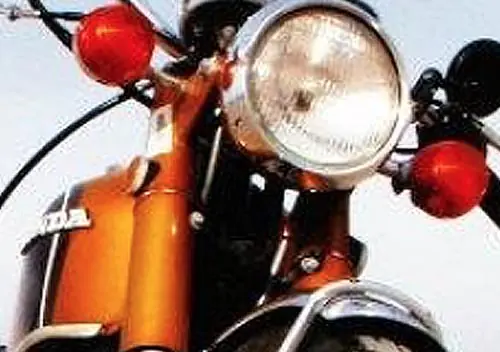
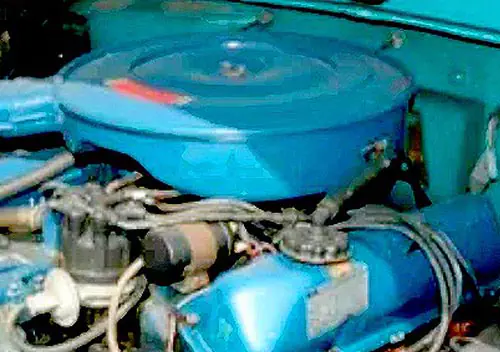
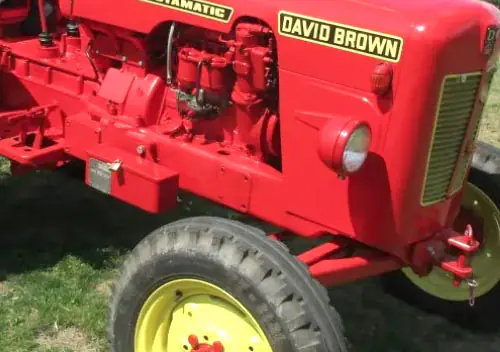
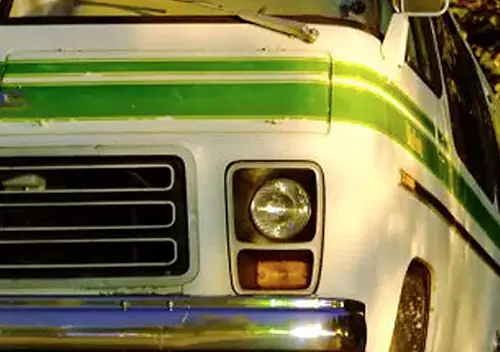

The nearest I came to a personal experience with Cadillac was with my late father’s 1968 SDV,,,his only break with a lifetime of Oldsmobiles.
However the mention of Sammy Davis, Jr.’s “Candy Man” brings a rush of memories. At the time I was working in radio in Ft. Myers, Florida, where the AM/FM combo was tightly managed by the owner (who’ll be nameless). The FCC had just issued an advisory about lyric vigilance in March of 1971. Mr. Nameless took it very much to heart and determined “Candy Man” was somehow drug-related and yanked the single. But wait, there’s more! I was jocking on the FM side, playing Country, when he barged into the studio and ripped “Six Days On The Road” by Dave Dudley (“I’m takin’ little white pills and my eyes are open wide.”) from the turntable. The absolute nadir: Bobby Goldsboro’s “Watchin’ Scotty Grow” was zapped because of supposed sexual innuendo.
That is hilarious! On the other hand, Sammy Davis WAS on a lot of drugs in that period, so maybe Mr. Nameless wasn’t altogether wrong. (Sammy didn’t write “The Candy Man,” of course — it was by Leslie Bricusse and Anthony Newman.)
Those Talisman seats look like pants legs. I wouldn’t want to sit on the lap of two people who were already in the seat!
Great article but the headline is a whiff…’go brougham or go hougham’ was *right there*!
There doesn’t seem to be ubiquitous agreement regarding how to pronounce “Brougham” – at least the way I’ve always said it doesn’t rhyme with “home”. But maybe I’ve been saying it wrong all these years…
The British pronunciation, at least in the Sherlock Holmes radio shows I’ve been listening to, is “BRO’um” — the “gh” is silent and the “a” is clipped. It doesn’t exactly rhyme with “home,” but it’s close enough.
That 1974 Cadillac Fleetwood Brougham d’Elegance with Dark Terra Cotta interior is dream car material for me. Perfect exterior/ interior colour combo, and I love all the detailing and fake wood. The Dark Terra Cotta Maharajah pattern cloth upholstery is also very cool, a blend of the two would be spectacular
If a manufacturer came out with a package like this for a modern electric car I’d switch tomorrow
“For better or worse, this kind of bling is what Cadillac was selling in the ’70s.” Precisely. And Cadillac sales rose to record heights.
Criticizing these cars is like criticizing superstars Elvis Presley, Dolly Parton, or Liberace for their fashion choices. This was the “look” that was fashionable at the time. The same sort of blatant, pseudo-luxo “themes” were present in home furnishings, men’s and women’s clothing, hotel lobbies, sets for TV game shows, etc. etc.
There is something kind of endearing about a GM stylist creating appliques that resemble hand-carved exotic woods, and upholstering a car with the softest, finest textiles available. They were reaching for a higher aesthetic, but were weighed down by cost concerns and iffy assembly quality.
These ’70s Cadillacs seemed to have a different vibe from the pre-’65 Caddies. As a kid at the time, I found them hard to relate to. They seemed over-formal, only driven by old people. Or mafia types in TV shows. I assumed that anyone driving a Cadillac was rich. Someone driving a Mercedes was also rich, but somehow more sophisticated and intelligent.
The irony is these Cadillacs were not meant to be “tacky” or “in bad taste”. The designers intended them to be elegant and beautiful. If these cars ARE in bad taste, what does that say about the masses of people who bought them? I’ve heard that raising the level of the public taste is like trying to raise the level of the ocean by spitting in it. Actually, I think a lot of today’s cars could use a little of this lavish, classic element. As kitchy as these ’70s broughams were, at least they looked like they were designed by human beings, not space aliens!
P.S.: I really liked seeing all these lush Cadillac interior options shown in one place.
Vinyl tops: The 17-21 inch wheels of today serve the same purpose. The American consumer never really changes.
What really destroyed any residual prestige value within a few years was that conversion vans started offering the same kind of over-the-top fluffy velour on their Lazy Boy seats and everywhere else inside them along with the kitschy fake wood trim. Undoubtedly the fabrics weren’t as high quality as Cadillac’s but it didn’t matter. And these conversion van aged very badly, given the cheap materials and kids spilling their drinks and ketchup all over them and….
It just goes to show how luxury can be so easily appropriated and debased, especially when it’s just about pouffy fabrics and such.
The Talisman enigma. Is it tacky in a tasteful way or tasteful in a tacky way?
Big Chevys The actual cost of all that bling was low, the price to the buyer was high. There was a lot of profit there for a short-sighted GM.
Tacky or no, they’re nothing available today that offers such an enormous breadth of colors, fabrics, and designs today. For that, I somewhat can appreciate ’74 Cadillacs. And there are some interior elements I like, like the huge door pull handle and the square things that hold them in place, and the thick carpeting everywhere. But the woodgrain trim has to be the most obviously fake ever used in a car.
The real problem wa sn’t the Olds 98 undercutting the Fleetwood it was the Caprice undercutting the Olds. The BOPs are not going to out Fleetwood the Fleetwood, and thye Cadillac name still counted for something. There were increasing and expensive federal pollution and mileage requirements and Chevy through Buick each having their own unique engines of similar size went from a mild extravagance to unjustifiably expensive. You can get the French bordello interior with power everything and top of the line radio in the Chevy with essentially the same powertrain so what’s the point for the mid-prices?
I’m one of those who love the 70/80’s Cadillacs. My parents first (used) Caddy was a 1975 Sedan Deville in light green with those pattern cloth seats that looked like curtains in a way. They then traded into a more modest 1979 in maroon with maroon cloth.
Here’s what I’d say about all this however. I think a person needs to look at this time period and not judge these cars from today’s perspective, but try to look at them from a 1970’s point of view. This was a time where leisure suits, patent white leather shoes, bell bottom pants, large glasses and vibrant colors were groovy. So was Cadillac out of place back then? Not at all. But compared to todays overly boring boxes in fifty shades of gray, these old Caddy’s certainly stand out.
Cool little note. My boss was married to Sammy Davis’s daughter. I just asked him if he remembered that brown Caddy with the special top. He didn’t know Sammy till 1980.
Agreed. I LOVE the cars, although, I can’t say I Love the Wardrobe “fashion” of the times.
Then again, look at “fashion” today- Yoga pants/Pajama bottoms/sweatpants etc.. (and that’s viewing 2020’s fashion IN 2020’s), Maybe 74 styles weren’t so bad after all.
I’d still take any 70’s Caddy over the boring “no color” cars with black interior of today.
Mother traded her 1972 Electra 225 for a 1974 Sedan deVille, and then a 1976 Fleetwood Brougham. She never like driving any of them, but she really liked being seen driving them.
Something (I don’t know what) changed by 1980, and she switched to driving cars she *wanted* to drive. A 1980 Volvo 244GL, followed by a 1988 Eagle Premier and then a 1992 Pontiac Bonneville with one of the sporty packages.
I know from my own childhood that, at least for my dad, he drove Cadillacs for the “look at me” factor. But then, he had a very sad upbringing; his mom died when he was 9 and his father was a horrible man, drinking and bringing home prostitutes. He told my dad he’d never ever amount to anything. Well my dad put himself through Ohio State and graduated as an engineer, working for North American Aviation. I know his desire to drive a Cadillac was his way of rewarding himself.
And now, after waiting some 45 years, own my own 1978 Cadillac Fleetwood Brougham d’Elegance.
Great article and nice to see another perspective. And I’ve owned 5 Caprice classics, but I prefer my Cadillac.
LOVE those LAND YACHTS! The Brougham deElegance (I had an 89) and Talisman perfectly fit my OTT philosophy of TOO much is NEVER enough. It’s HUGE! It guzzles gas! It pollutes the air! It scares the birds! Other cars part like the Red Sea to get out It’s way! What’s NOT to love! Unfortunately my 93 Brougham was plagued with many issues. For me, that Cadillac marked the beginning of Cadillacs long slide from The Standard of the World and my move To Town Cars. My current low mileage 2007 Signature Limited is the last gasp of TRADITIONAL American Luxury. There Is NOTHING to equal those glorious LAND YACHTS.
I’m with RICK W.
I love those interiors -especially the maharajah one – makes me feel like ordering a curry from my local takeaway Indian place.
The radio in the close-up shot showing the Cadillac-crest knobs has a built-in CB radio, the most ’70s option ever. 10-4, good buddy!
I suppose such kitch interiors were supposed to attract new buyers but Cadillac simply went over the top with these cars. The interiors of the post 1971 cars were a real downgrade when compared to previous generations. My uncle had a 1973 Sedan DeVille and it had brocade, which in my opinion makes for classier fabric that the ones illustrated here.
I drove uncle’s car a couple of times. It was smooth, quiet and immensely huge. It also rattled and squeaked a lot.
The environment which supported the evolution of the post-war Cadillac severely was damaged by the 1973 oil shock and its aftermath, the 1974 Talisman a pre-crisis relic; of its evolutionary branch, undoubtedly it was the highest form of what was a doomed species. As period pieces, the 1974 Cadillacs were supply but there was also demand and that buyers, in impressive numbers, chose some of those combinations of colors and fabrics is interesting. “Medici crushed velour” had about the same relationship with history as Chrysler’s “fine Corinthian leather” had with geography but presumably buyers chose to have their Cadillac trimmed in “Monticello velour” because they liked the fabric, not because of anything the fanciful name imparted. For those who wanted more, for an additional $85, the 1974 Talisman could be supplied with matching pillows and a robe, the latter unfortunately not cut in leather.
Uniquely in 1974, as well as the four shades of “Medici crushed velour” at $1800 (Black, Dark Blue, Medium Amber & Dark Terra Cotta), for $2450 there was the option of Dark Blue or Medium Saddle leather (although none seem to have been ordered in blue); this was at a time when the MSRP of a Chevrolet Vega was $2617. At either premium, one did at least get quite a lot of stuff when one bought a Talisman and the option does seem more obviously “good value” than the $14,000-odd Ferrari now charges to paint a pair of its fender shields although Cadillac’s profit margins would have been high. In a somewhat subdued market, GM probably was pleased by having sold 1878.
I unfortunately could only find one picture of the Talisman leather package, and the photo was of low quality and dubious provenance that it didn’t seem worth including.
Alas, none of the pictured Talismans seem to have had (or at least retained) the optional throw pillow and lap robe. I did find an auction listing for a Cadillac lap robe of that period, but the seller’s pictures just had it stretched out across the ground rather than in situ.
1974 Cadillac Fleetwood Talisman trimmed in Medium Saddle leather. The hide looks fine enough to be Corinthian.
Ahh, cheers!
i should note for the record that the Talisman leather package was a mid-year addition in 1974: It’s not described in the initial dealer data book, and some 1974 Cadillac brochures and price lists don’t include it at all.
Pillow & lap robe in 1973 Fleetwood Brougham d’Elegance. The production code was BH1.
Excellent! Like I said, I didn’t have much luck on finding examples of the lap robe and pillow.
Lap robes were REALLY a ’30s throwback. Cadillac had still offered them into the late ’50s, but they were no longer mentioned in the accessories lists in the ’60s. Nostalgia is a helluva thing (as is charging $85 mid-’70s dollars for essentially a pillow and a blanket).
Marvelous article! “You had to be there” is oh so prescient regarding that era. The targeted buyers had come through the Great Depression and WW2; Cadillac was their upmost way to make a statement. Coming from a crew of Eastern European immigrants, the highest my extended family got was Buicks, Olds and Chryslers. The famous mid-70s picture of Jackie O in her Bavaria spoke to the coasts, and in the 80s the next generation fled the land yachts for the Germans and the Japanese…
Is there something wrong with my eyes or does the chrome spear from front parking lamps to the wheelwell not line up with trim on the other side?
I think it’s mostly an optical illusion caused by the chrome molding around the wheel well outline, but on the white Fleetwood Brougham d’Elegance, it does look like the trailing end of the spear might angle up a bit more than it should.
Agree on all counts. By 1974 a Cadillac was only a smoke & mirrors four-wheeled barge overloaded with plastic glitz. What it didn’t consume in petroleum, it consumed it during its manufacture with synthetic materials derived from petroleum. And 1974 had the poorest, low-grade steel as well.
Curiously, while Cadillac was going for volume and never mind the quality, Mercedes was doing very well out of quality in every sphere. But someone in Stuttgart must have been paying attention and although MB build some excellent cars (the S-Class is still the best traditional saloon in the world), their mass ranges are now no better than VAG, BMW or the best from Japan and Korea.
The article might have been more upbeat if Aaron had put on a Sammy album other than Live at the Coconut Grove – IMO that one aged especially poorly.
Loved the article – it’s as lush as the cars.
As Paul has documented here, Cadillac took a deep dive into cheaper and gaudy with the iconic ’59. The brand recovered nicely until ’67. I’ll give the ’65-’66 credit for still being elegant, and not subtract points for mechanical commonality with “lesser” GM cars.
I’m not sure i understand, and I don’t agree that these barges were “underpowered”. We had a ’74 commercial chassis, which became a S&S Victoria hearse, and if you stepped on it, that 472 would pick that thing up and go. No,, not blindingly quick, but quick enough to surprise you.